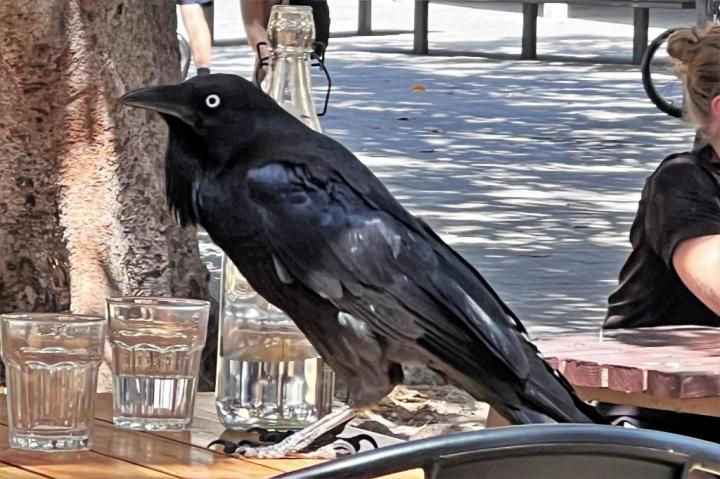A Dutch Sea Captain (Not Captain Friso of Zuiderdam) named Willem de Vlamingh “discovered” an island about 12 miles off the West Coast of Australia in 1696. He said it was infested by giant rats so named the island Rott-Nest or Rat’s Nest. The locals call it Rotto. But they weren’t rats they were Quakkos, marsupials related to the wallaby.
Of course, the island had been “Discovered” about 30,000 years before the Dutch Captain misnamed it. There are archeological remains of the Wadjuk people dating back more than 30,000 years. About 7,000 years ago the island was separated from the mainland by rising sea levels and, according to one of the longest-lived oral traditions in history, the people left. But they believed that the spirits of their ancestors transited the island on their journey, so it became sacred. The Wadjuk people call it Wadjemup which means “place across the water.” There is a monument describing this tradition and a kiosk where you can press a button and hear an elder tell you the story.


More recently Rottnest was used as a prison for Aboriginal people from the interior. More than 300 died in detention and 7 were hanged. Their spirits add to the island’s history and its importance to Aboriginal people.
In World War One it was used as an internment camp for immigrants from enemy countries, mostly Austria. Ironically most of the internees were part of the vast ethnic makeup of the Habsburg empire who were not ethnic German. They were Slavic people, mostly Croats, who left for Australia to get away from the Habsburgs. In World War II it was used to intern Italian Immigrants.
Now it’s a resort, off the grid, no private cars, just busses and bike and walking paths. There are also garbage trucks that have the strange wording on front “NPR Programmed.”

Rottnest/Wadjemup has wonderful beaches, both sheltered and for surfing. People come to swim, surf, relax and take selfies with cute little Quakkos.


Quakkos are not difficult to find. If you are in an outdoor restaurant, they can remind you of restaurant cats. There are signs all over the place telling you not to feed them or pick them up. Because they have no natural predators, they don’t fear us. Because they are cute people like taking selfies with them. We saw folks lying on the ground next to quakkos, being careful not to touch or feed, while they snapped their selfies.

Quakkos used to be common throughout Western Australia but introduced predators, mainly red foxes and cats, have wiped them out. Rottnest is fox and cat free, so they have prospered to the point of overpopulation. They are overeating shrubs and trees. Some trees have protective fencing to protect them from quakkos debarking them. Officials are thinking of live trapping quakkos and reintroducing them to the mainland in areas that have been cleared of predators. (On Kangaroo Island we saw cat fences that had tops rolled over to make it difficult for the felines to climb. It is an attempt to create a predator free zone there.)
Rottnest is a half hour high speed ferry ride from Fremantle where we are docked.


The hop-on-hop-off bus that we had planned to take was sold out so we walked along the island path and among the summer bungalows that reminded Suzi and me of the cabin resorts we stayed at in the ‘50s as kids. They had slatted walls to let in the breezes and big verandahs.


We walked the beaches, wading in the water, and enjoyed lunch with some good Western Australia Wine. I did not take any quakkos selfies.






Actually, I found the local crow most interesting. It’s black with most arresting eyes and a cry like an angry cat.


Instead of taking the ferry back to Fremantle we took it to Perth, the ride taking an hour and a half, for two thirds of the time running at harbor speed up the Swan River to Queen Elizabeth Quay in the Perth Central Business District. I’ll talk about Perth in the next blog post.






